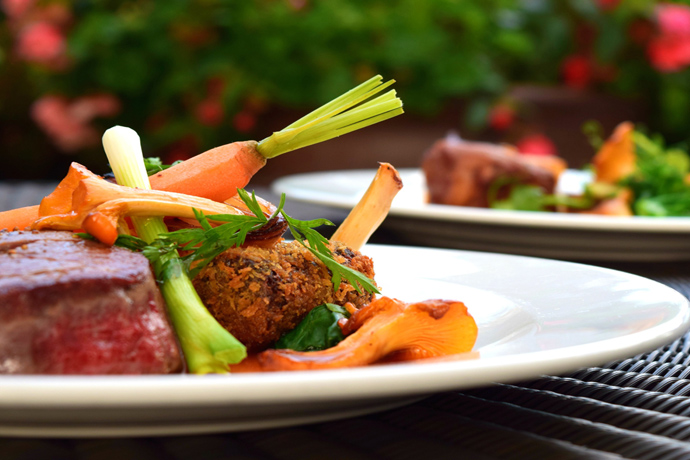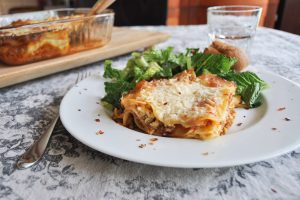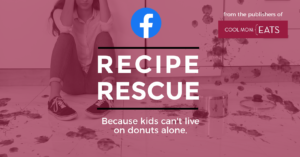I didn’t take my own advice about when to start the Whole30 diet and went on vacation during my third week.
Granted, I decided to do the Whole30 after I had scheduled my trip, but I thought that two weeks would give me a good enough start to be able to stick with the Whole30 away with me family. I have to say, it was not as hard as I thought it would be, though there are a few things I’m glad I did to make it easier and, let’s be honest, more enjoyable.
Before sharing what helped me, I should let you know that that I’m pretty sure I consumed a little bit of butter and sugar because I ate out a lot while I was away. If you’re sticking to the Whole30 diet by the book, then you would have to restart the whole thing.
I’m not going to do that, so keep that in mind when it comes to my results.
And hey, while I haven’t lost any more weight since the initial 5 lbs. during my first week, I have lost almost 2 inches off my waist (yay!) and 2 inches off my bust (grr!) so I think I’m doing something right.
Here, my tips for surviving the Whole30 diet on vacation. You can do it!
Related: Getting started on the Whole30 diet: 5 surprising things that happened during the first week.

1. Do your research before you go
Before you hit the road, I suggest checking out the restaurants and grocery stores near where you’ll be to see what’s available in terms of safe food. You can find most restaurant menus online these days, and it could be worth calling the grocery store to see if they carry the basics you’ve been using to get by.
If you know you’ll be able to purchase Whole30 diet safe foods while you’re away, then this could really help lighten your packing load (see #3). And if you can’t, then you might consider packing a bag full of food to get you through the week (keeping in mind your destination and customs regulations if you’re on an international flight).
2. Prepare your hotel room (or consider renting a house with a kitchen)
Having a kitchen will make keeping up with the Whole30 diet on vacation a whole lot easier. I’ve used services like Airbnb, Homeaway, and Kid & Coe to find rental properties before, most of which have fully-equipped kitchens so that all you need to do is find a grocery store nearby. And cook.
If you can’t rent a house, call ahead to your hotel and ask them for a few amenities, specifically a microwave (if that’s available) and a refrigerator. This way, you’ll be able to shop for food, then keep it fresh for when you’re ready to prepare it without having to rely solely on eating out, which won’t give you much control over what you’re putting in your mouth.
I’ve found that most hotels are extremely accommodating, and even if there’s a small fee, it’s totally worth it.
3. Pack safe food
You should absolutely pack safe food for your trip, using your research (see #1) to determine how much you’ll need. Keep in mind that it costs money to check a bag, so purchasing a lot of food at home when you can buy it on vacation might not necessarily save you cash. That said, you’ll want to pack at least enough to cover your travel and the first day or so. This way, you don’t have to worry at all while you’re driving or flying, or during that first day settling in.
And if your kids like to eat your Whole30 diet-safe foods, pack extra or make sure your kids have their own food. The worst thing is to get hungry on the road, and not have access to your safe foods.
Related: The best, healthy snacks for on-the-go eating

The kids’ meals at the Westin Jekyll Island that I ate pretty much every day
4. Find a dish or two that work, and stick with them
I’m not going to lie: Eating for the Whole30 diet can get pretty boring, especially on vacation, but finding a dish or two that work at your hotel or local restaurant can be a lifesaver. I found a completely safe salad and steak dish on the hotel restaurant menu (on the kids’ menu, no less!) that I ordered every single day—sometimes twice a day—without fail. Along with snacks that I purchased at the grocery store, that’s pretty much how I survived the week.
Trust me, I was ready to eat anything else by the time I left, but at least I didn’t have to worry about what I was going to eat at mealtime, because I knew I could rely on that salad.
5. Don’t be afraid to make special requests
I don’t tend to be one to make special requests when I eat out, so asking for substitutions or giving specific requests for how to cook something was very new to me. If it’s not for you, then you’ll be very comfortable asking for fruit instead of mashed potatoes, or oil and vinegar instead of the dressing that comes with the salad.
I also got in the habit of asking for my food to be cooked with olive oil rather than butter.
I found that when I was honest about why I was making the request and was nice about doing so, it was honored 99% of the time. I also left a larger tip than usual as a thank you for some of the requests that I knew required a change in cooking approach from the kitchen and attention from my server.
An insider restaurant tip from an expert: It’s super important to clarify that you’re not allergic, but rather sticking to a specific diet, as the kitchen has very specific precautions when cooking for someone with allergies. If you are dishonest (like claiming a dairy allergy to avoid butter), it really disrupts the kitchen, and can negatively affect the meal of a future guest who might truly have an extreme allergy.
The bottom line: It’s totally possible to eat according to the Whole30 diet while on vacation and still have fun. I found that my vacation became all about getting some much needed rest and enjoying the company of my kids, rather than what I was going to eat next or what drinks I’d be trying (and then recovering from the next day).
Curious about starting the Whole30 diet? Check out Kristen’s tips for getting through the first week and be sure to check out the post about My Honest Whole30 Diet Results.





